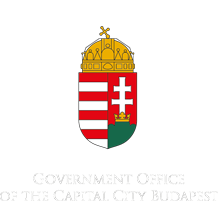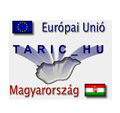

SHORT STORY OF THE HUNGARIAN METROLOGY
- 1874: The metric system was introduced in Hungary. The Hungarian Royal Central State Committee was established for the supervision of the activity of the verification offices acting in the framework of the local municipalities.
- 1875: Hungary joined to the Meter Convention.
- 1907: The national verification service was established on the basis of the act of V/1907. The national verification offices were governed by the Hungarian Royal Central Metrological Institute.
- 1907 - 1918: The central metrological verification offices and the metrological workshop were established, 53 verification offices started functioning all over the country. Verification of the hectolitre mass of cereals was started.
- 1918 - 1945: The Metrological Institute was moved to a new seat, to the present site of the National Office of Measures. The laboratories for electrical, temperature and gas measurements were set up. The mandatory verification was extended to the volume standards and tanks, the areometers for petroleum and must areometers.
- 1945 - 1991: The rebuilding of the war damage was started. The reconstruction work of the buildings and the equipments of the Metrological Institute and also of the verification offices was started. The metrological activity was spread in the fields of science and industry. The office assigned the present name. The laboratories for force and pressure measurements, flow, electronic, optical and microwave measurements, radiation physics and chemistry were established. The third building was built up on the central site. The verification service was modernized, laboratories were air conditioned, computerization started, special vehicles were put into service.
- 1991 - 2005: The Act on Legal Metrology XLV/1991 was established by the Parliament. The National Office of Measures was confirmed to be central leading, supervisory authority of metrology in the national scope. The flag, the coat of arms and the operating procedures were set by the organizational and operating rules of the National Office of Measures.
OMH become first an associate member in the international regional metrologial organizations (EUROMET, WELMEC) and later become a full member after joining to EU. Mutual Recognition Agreement (MRA) was signed by the countries of the Meter Convention.
OMH participated in the activity of the National Accreditation Board. The harmonization of Hungarian legislation with EU directive was developed. The quality system of OMH was implemented and operated. - 2006: The European Parliament and Council Directive 22/2004 (03.31.)/EEC „MID” was implemented in Hungary by the decree of 8/2006 (II.27.) of the Minister of Economy and Transport, bringing into force with effect from 2006. October 30.
- 2007 - 2010: OMH merged into the Hungarian Trade Licencing Office (MKEH) with a general legal succession as a result of the paragraph 14. § (2) of the governmental decree of 206/2006. (XII. 20.). The centre of the former OMH continued working as the Metrological Division of MKEH. The legal metrological authorities continued to carry out the tasks imposed by legislation in the form of the chain of the Legal Metrological and Technical Safety Authorities.
- 2010 – The Administrative offices were designated as regional metrological authorities by the governmental decree 320/201 (XII.27.). Verification of measuring instruments (except for some special types of instruments) were performed by these offices supervised by the Metrological Department of MKEH.
- The laboratories of the Metrological Department were started to be involved in the EU-funded international metrology research and development programs (EURAMET EMRP).
Date of last update: 2017-06-06






























